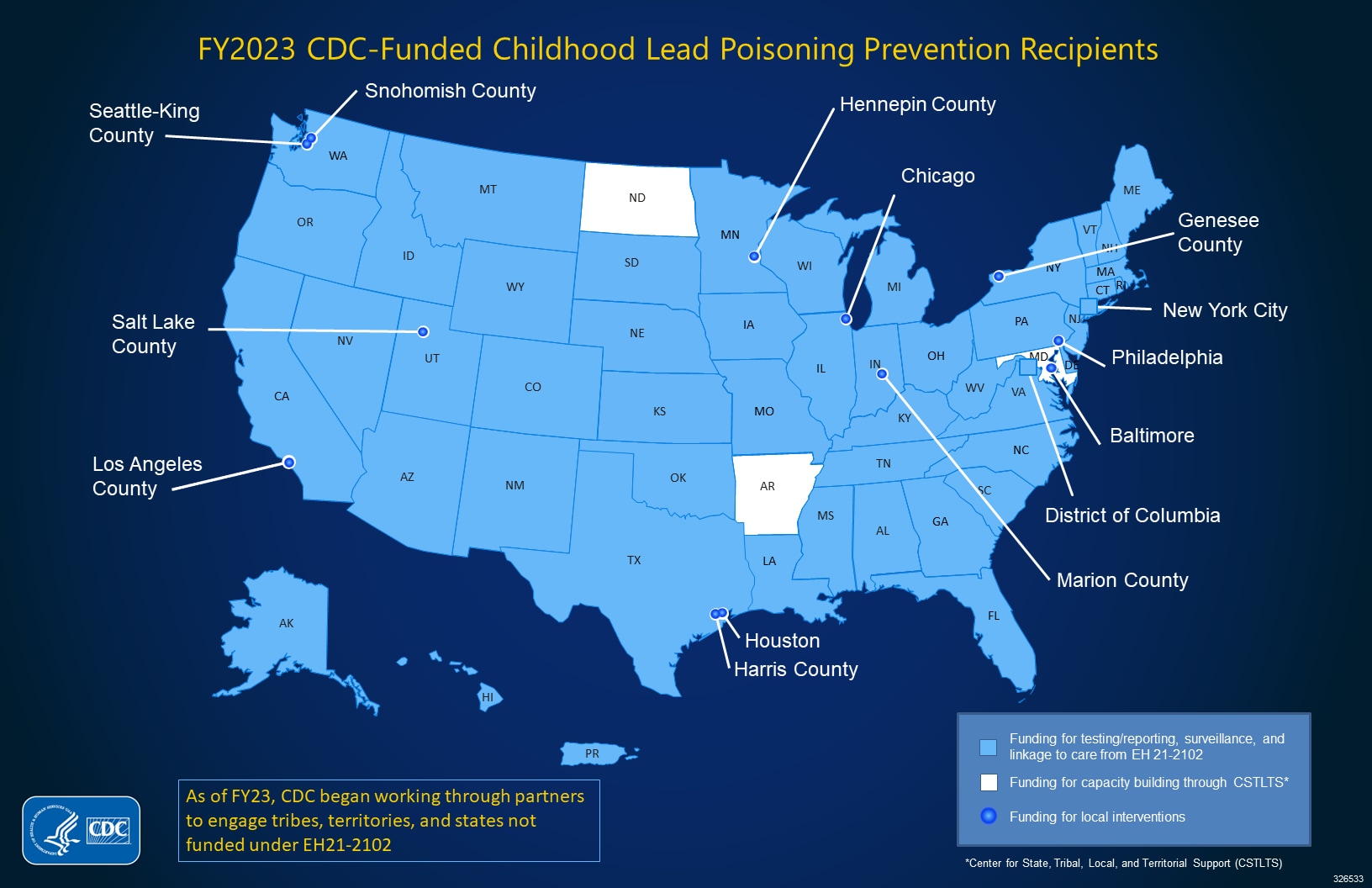At a glance
CDC supports state and local health departments, or their bona fide agents, through cooperative agreements to support childhood lead poisoning prevention. Prevention efforts include strengthening: blood lead testing and reporting, surveillance, linking children to recommended follow-up services, and targeted population-based interventions.

Overview
Cooperative agreement recipients are expected to work closely with other agencies, partners, and stakeholders serving children. They work to identify and ensure that a comprehensive system is in place for children who are exposed to lead. These systems include referral, follow-up and evaluation.
CDC also funds the Flint Lead Exposure Registry through a non-research grant to a consortium of investigators. Investigators includes those from Michigan State University in partnership with the City of Flint, the Greater Flint Health Coalition, and others. This grant requires collaboration with community leaders, clinical partners and educators, stakeholders, and community-based organizations that serve Flint residents.

Success Stories
Success stories refer to activities conducted by funded programs between 2014 and 2019. State and local jurisdictions that did not receive funding during this period were not required to submit a success story.
CDC's Childhood Lead Poisoning Prevention Program develops "success stories" in partnership with state and local cooperative agreement recipients. These stories highlight lead poisoning prevention achievements. Each success story exhibits tangible results of prevention and surveillance activities conducted by state and local health agencies. Success stories collectively demonstrate progress toward meeting national program objectives. The stories below are grouped by main topic but may involve strategies related to other topics.
Note: The purpose of these success stories is to share best practices among state and local childhood lead poisoning prevention programs. Data in these stories might differ from what is listed on the state and local health department websites. Definitions and classifications also might vary across jurisdictions and might have changed over time.
Some of the success stories below refer to CDC's previous blood lead reference value of 5 micrograms per deciliter (μg/dL).
Note
This updated level is based on the U.S. population of children ages 1–5 years who represent the top 2.5% with the highest blood lead levels.
To view all of the states below, click “show more” in the Geographic Location section. Next, click on or hover over that section with the cursor and scroll down.
